 Your new post is loading...
 Your new post is loading...
This just in: Your customers are no longer trapped on the receiving end of your value chain. With instant access to peer reviews, competitor offerings, and prices, they’re advocating for new products and services while openly and instantly communicating their likes and dislikes.Thanks to technology, customer passivity is a thing of the past. And they’re exerting their new-found power through 4 major trends...
In an empowered age, people are exhibiting dramatically new habits in the way they become aware, consider, buy and advocate. These new habits supplement and do not necessarily in the near term replace the ways they traditionally evaluated and bought products and services. However, in time, we anticipate that these new behaviors are likely to become dominant.The three biggest shifts are enhanced expectations, connected experiences and self marketing.A simple example of a company that has both fueled and benefited from these shifts is Amazon. They both have created and responded to peoples expectations for speed, value and service, seamlessly connected all aspects of the “marketing funnel” and fed a habit of us marketing to ourselves as we search, evaluate and comment on products and services. Today 30% of all e-commerce searches start on Amazon versus only 13% on Google....
Loyalty is an increasingly fleeting thing. In fact, the average Gen Y mother now defines “brand loyalty” as a window of allegiance lasting 6-12 months before she moves on to explore alternatives. And suffice to say, there are plenty of alternatives out there for her to explore, regardless of category. So, given the increasingly elusive nature of loyalty and the abundance of brand and product choices available, one might be inclined to argue that there’s never been a more important time for you to implement a loyalty program.
But it’s simply not true and here’s why…
Any loyalty program you create probably won’t work. But don’t feel too badly because as it turns out, most loyalty programs don’t work – at least not the way the companies who own them would like to believe. In fact, a recent study from Edgell Knowledge Network found that the level of actual brand loyalty among consumers who are part of a loyalty program versus those who are not, is not materially different.
So, why don’t most loyalty schemes work? Research points to several reasons....Loyalty programs are transactional. Loyalty isn’t....
Almost two-thirds of consumers (63%) have bought products online before collecting them in-store at least once in the past 12 months, while 16% use reserve-and-collect at least once a month.
Overall around a fifth (22%) of consumers said they have never used the service, which is actually a very slight increase compared to 2012 when the figure stood at 20%.
Even so, the data highlights the continuing importance of reserve-and-collect services for multichannel retailers as a sales tool. The Multichannel Retail Survey, conducted using the Toluna survey tool, also found that 50% of respondents had abandoned a purchase online due to unsatisfactory delivery options....
Super-rich watch buyers are not all equal. Recognizing that ultra-high-net-worth consumers are not a homogenous group based on psychographics, there are three profiles marketers can use to craft appropriate messages for the watches they are selling.
“If you assume the market of ultra-high-net-worth households is at about 200,000 worldwide,” said Douglas Gollan, Editor-in-Chief of Elite Traveler, a magazine that targets the wealthy through distribution aboard private jets and also publishes an annual watch guide for readers, “using the research we’ve done examining psychographic composition of wealthy watch buyers, there are 21,000 Connoisseur households accounting for US$4.7 billion in sales, 31,000 Trendsetter households generating US$2.5 billion in purchases and 13,000 Winner households accounting for US$2.3 billion in luxury timepiece sales.”...
Six minutes: it isn’t a lot of time, but it’s all you’ve got to keep shoppers’ attention, according to a new study conducted in the UK from Omnico, an omnichannel and customer experience company.
According to the findings, British shoppers will patiently wait in line for roughly 5 minutes and 54 seconds in-stores before they abandon their path to purchase completely and leave the store....
Customer Experience Management professionals are too obsessed with methodologies of measurement and not enough with making them actionable.
Research into customer experience shows that a majority of consumer-facing industries are not rated very positively by the customers. Temkin Group researchers surveyed 10,000 U.S. consumers to come with this conclusion. Amplified Analytics’s analysis of 12,832,246 customer reviews published during the same time period produced similar results, although measured on Social NPS® scale.
Temkin Experience Ratings
I think most executives would not question the importance of customer experience to long term viability of their companies. The real question is why these companies cannot figure out how to improve it. Don Pepper offers a brilliantly simple answer:“The overwhelming majority of businesses measure their financial success based on current sales and costs, while customers are focused on the customer experience they anticipate....
...A survey conducted by Toluna and Adroit Digital revealed that consumers are influenced by social media recommendations. In total, 40 percent admitted their decisions are swayed by the reports they read on social sites, with 7 percent saying they are highly influential.
Shared social content might spark prospects’ interest, but it’s only the first step. Marketers must assume internet users are going to research products and services before converting. The survey confirms this idea, showing that around one-third of consumers buy after visiting one website, but 22 percent go to two domains and 17 percent navigate to a third before making up their minds. Content marketing gives companies a way to ensure effective messages are present at every stop along the way....
...Smartphones allow us to answer our own product questions about options, specs and, of course, price while we’re out shopping. And Google is trying to figure out what that means for marketing and purchase decisions. Seventy-nine percent of smartphone owners are what Google calls “smartphone shoppers,” meaning that they use their smartphones at least once a month in stores. That’s a lot of people. If there are 130 million smartphone users in the U.S., then about 111 million Americans use their smartphones to prepare for shopping or to look things up while there. It’s not surprising that Google wants to get in all those heads and see what’s going on. There’s money there!... The most surprising finding was probably that people who consistently use their smartphones as part of their shopping spend 25% more than people who only use their smartphones for shopping occasionally....
Americans are increasingly abandoning traditional television. In 2007, the number of "Zero-TV" households was around 2 million. It has since grown to more than 5 million, according to a recent Nielsen report. We first saw the news on Google Ventures Partner MG Siegler's personal blog. Nielsen defines "Zero-TV" households as those that don't fit into its definition of a TV household. It doesn't mean that those households don't have traditional TV sets, but it's just that the majority of them get their content from computers, tablets, and smartphones. In short, it means they're not paying for cable. But here's the real kicker: nearly half of these "Zero-TV" households are under the age of 35, marking a clear trend in our viewing habits. Anyway, look at this chart. It shows traditional TV households versus "Zero-TV" households broken down by age...
In 2012, one in five consumers switched companies they buy from, including wireless phone, Internet service and retailers, according to new research released today by Accenture. This marks a five percent increase in switching over 2011 levels. However, the eighth annual Accenture Global Consumer Survey also found that the majority (85 percent) of consumers say the companies could have done something differently to prevent them from switching.... [Accenture report: Valuable insight into consumer purchase, online behavior & retention ~ Jeff]
|
Brands are failing to perform in the areas consumers deem most important to building and maintaining connections with them, details a new study from Edelman.Brands are failing to perform in the areas consumers deem most important to building and maintaining connections with them, details a new study from Edelman. The researchers surveyed 11,000 online consumers who reported participating in a minimum of one brand engaging activity (such as following a brand on Twitter) in the previous year. The study, which took place across 8 countries and measured attitudes to the performance of 48 multinational brands and about 30 “local” brands per country, identifies some areas where brands are far behind in meeting consumer needs.
The biggest gap between importance and performance came in the area of “communicating openly and transparently about how products are sourced and made.” While 54% of respondents considered that an important area (top-2 box on a 5-point scale) for brands to build and maintain connections with them, just 12% on average believed that the statement applied to the brands in question....
In an empowered age, people are exhibiting dramatically new habits in the way they become aware, consider, buy and advocate. These new habits supplement and do not necessarily in the near term replace the ways they traditionally evaluated and bought products and services. However, in time, we anticipate that these new behaviors are likely to become dominant.
The three biggest shifts are enhanced expectations, connected experiences and self marketing.
A simple example of a company that has both fueled and benefited from these shifts is Amazon. They both have created and responded to peoples expectations for speed, value and service, seamlessly connected all aspects of the “marketing funnel” and fed a habit of us marketing to ourselves as we search, evaluate and comment on products and services....
Recent research from the Centre for Retail Research (CRR) predicts that one in five retail stores on the high street will close in the next five years – in addition to the ongoing shop vacancy rate of 14.1%. But there's signs that the future doesn't need to be all about reducing store or staff numbers to boost finances.
Many retailers are adapting their model to shoppers’ changing habits and desires - taking advantage of technology to improve the instore experience and improve profitability. In doing so, they may be inadvertently reshaping the role of bricks and mortar shops....
The desire to be part of something bigger. To really understand what it is about branding that appeals to people, we first have to understand the deeply entrenched set rules that we as people, animals, or however you would like to refer to yourself, actually work to, whilst observing the guidelines, parameters and systems that we work within…sure Brands act as a sign post for the product or service, building associations etc but that’s not all and not enough either.
To avoid going into the deep physiological motivations that affect all of us, for the purposes of this article I am forced to make some sweeping generalisations. The first of these is that beyond all other emotional requirements, we have an unending drive to be understood. Understanding is the lifeblood of our emotional state. For those of you that wish to do a little back reading about this somewhat broad statement, I can suggest several well written studies, that do a far better job of explaining why this is than I can deliver in this short thought piece.
To illustrate: have you ever noticed that most people actually quite like talking about their thoughts, feelings, opinions and emotions to other people. We see the evidence of this in the massive popularity of status updates and tweets etc…
Today's consumers are using many channels to consume information. Are retailers thinking about an omnichannel strategy? If not, they should!
It’s well established that today’s consumers use multiple channels – mobile, Web, social media, in-store – when engaging with retailers. On any given day, a shopper might research a clothing item online, visit the brand’s Facebook page and then purchase it in a store where she can try it on; the next, she might see something in a store on her lunch hour, price-check it on her smartphone and purchase it online at home, after checking in with the retailer’s social media pages.
According to the Interactive Advertising Bureau, three-quarters of shoppers use their smartphones while in-store to make a purchase decision, and according to Vantiv VNTV 0%, Inc., half have research and purchased an item online and then picked it up in the store. But how aware are consumers of all this channel-switching? Do they think, “Wow, I’ve really used a lot of channels today!” Or even, “Hmmmmm – which channels should I use to engage with my favorite retailer?”
I’m thinking probably not. They’re just doing what consumers do, flitting from channel to channel like a butterfly, as fickle as can be, calling to mind the flighty “followers of fashion” described in The Kinks’ 1966 single. What is an Omnichannel Strategy? With consumers freely using whichever channel suits them at the moment, retailers must attract, engage with and gain the loyalty of these followers of fashion, and they can do this by creating a consistent experience among all channels — the so-called omnichannel experience.
An omnichannel strategy begins with generating awareness on digital channels, because while brand awareness in the past was all about signage and window dressing on High Street, it’s perhaps more important today to stand out on digital channels. Indeed, in emerging markets, mobile devices are the first channel through which consumers may experience your brand....
Is your company using social media to provide a better customer service experience and respond to customer outreach? Many are not! As Ferris Bueller said “Life moves pretty fast. If you don’t stop and look around once in a while, you could miss it.” And if you are not paying attention to your customers use of social media get customers service issues resolved, then you could be caught with your corporate pants down!
42% of consumers who complain on social media expect a response in under sixty minutes. (Source: Edison Research) So, do you really need to worry about using social media for your company’s customer service program? Why staff a socially savvy group of service reps when you already have a web site, email and a phone? Well, if your customer service program is like Cameron’s (from Ferris Bueller’s Day Off) home “”The place is like a museum. It’s very beautiful and very cold, and you’re not allowed to touch anything”, then you need to reconsider your strategy.
Your customers are on a changing customer service-seeking journey and are abandoning the old-school waiting for the “customer-service desk” experience. They are tweeting themselves to the front of the virtual customer service line. And, with 95% of people commiserating with others about their sub-par customer-service experiences, then that would mean a resounding … you need to do something about it!
Zendesk, a cloud-based customer service software platform, thought that finding out this information was so important that they commissioned Dimensional Research. Customers also share great experiences too, with 87% sharing good interactions with others. So, it’s not all bad news....
61% of customers read online reviews before making a purchase decision, and they are now essential for e-commerce sites. User reviews are proven sales drivers, and something the majority of customers will want to see before deciding to make a purchase. Here are some compelling stats on user reviews, why they are great for SEO, why bad reviews are valuable, and how to use reviews in navigation and on product pages...
Study finds Brits are shunning books in favour of using gadgets while on the toilet. Almost half of us regularly use phones, tablets and eReaders on the loo with a quarter of us spending this time shopping online.Brits are shunning books, magazines and newspapers in favour of using their gadgets while on the toilet. A study has found that 41 per cent of Britons admit to regularly using their phones, tablets and eReaders when sat on the loo. And 26 per cent spend this time shopping online....
To win over millennials, brands must incorporate participative benefits into their models.... In the new Millennial-inspired Participation Economy, the old definition of brand value — the one that worked for decades — is dead. As marketers, we knew that the sum of our core functional and emotional benefits divided by price would give us a proxy for brand value. Stronger brands had more price elasticity. However, the old definition no longer holds if you want to engage Millennials or older generations that are adopting a “Millennial Mindset.” THE NEW DEFINITION OF BRAND VALUE Millennials don’t just want to buy your brand, they want to be a part of it. They’re looking for ways to participate. And they want to understand why you do what you do not just what you want to sell. As a result, the brand value equation has morphed to include participative benefits. This is key for tapping into Millennial passion — and therefore, Millennials’ dollars. In The Participation Economy, (emotional benefits + function benefits + participative benefits)/price = brand value. We’ll explore this more in a bit. First, let’s review who makes up this generation — and how they influence your other consumers, too....
There’s never been a better time for marketers for to see, understand and respond to the customer journey. Today’s “open social age” has created a “looking glass” for companies to understand the complex nature of their customers as millions of them are broadcasting their opinions, attitudes, behaviors, experiences and even unmet needs on a real-time basis. In fact, society is rapidly approaching a complete digital state. New technologies have transformed the way people work, learn, communicate and share. And consumers freely share their opinions and experiences on social networks, blogs, micro-blogs, message boards, forums, mainstream news sites and a variety of other online platforms. According to Dimensional Research, over 90 percent of these consumers rely on independent reviews of products and services before they make a purchasing decision....
|
 Your new post is loading...
Your new post is loading...
 Your new post is loading...
Your new post is loading...












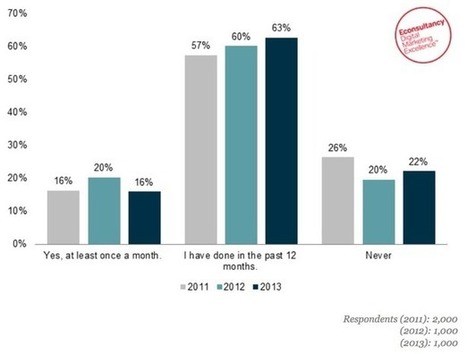


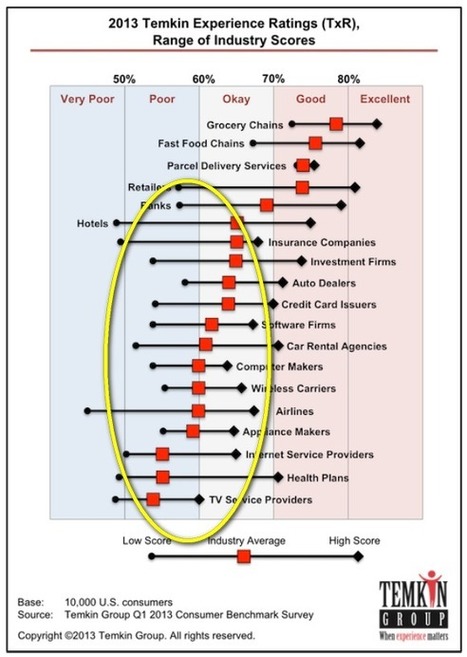



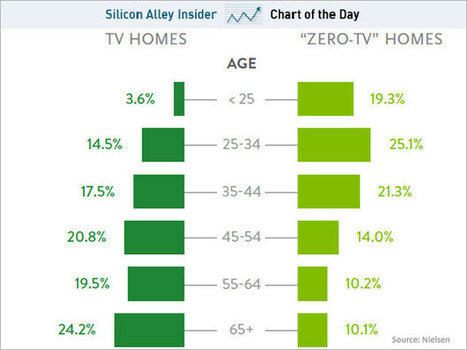

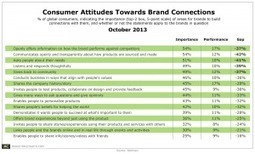








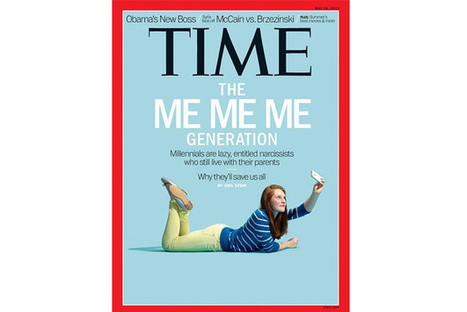






thoughtful look at what's ahead in consumer buyingbuying trends and impact on business.